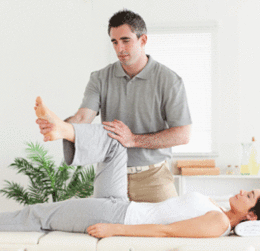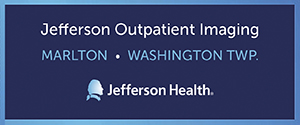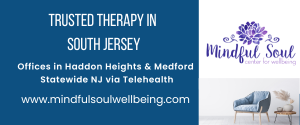
When it comes to healing, sometimes a comprehensive approach to mind, body and spirit is just what the doctor ordered.
When you get sick or have aches and pains, you may think your only option is medication or an invasive treatment. But many are turning to alternative medicine to find other solutions. Because “alternative” implies complete separation, “complementary medicine” is actually the term that many prefer because treatments like chiropractic, massage or Reiki aren’t necessarily meant to be in place of traditional medicine, but rather a complement. The biggest difference is that unlike traditional medicine, complementary medicine recognizes not only the physical but also the mental, emotional, energetic and spiritual dimensions of the individual—which is why it’s often referred to as “holistic.”
“Alternative medicine is nothing new,” says Dr. Jesse Liebman of the Liebman Wellness Center in Marlton, who adds that alternative medicine addresses the three main causes of dysfunction or disease in the body, which are: structural imbalance, including nerve interference from the spine, muscle imbalances, and skeletal/postural problems that cause chronic inflammation; nutritional/chemical imbalances including poor diet, creating deficiencies in nutrients, toxic exposure to environment pollutants, or excessive prescription drug use; and emotional imbalances like negative thoughts, financial stress and relationship stress.
Liebman says emotional stress probably causes more physical symptoms than any other category. “The educated health care consumer now wants the kind of care that does address this trio of factors to regain their health,” he adds.
Trying a complementary approach
“We consider ourselves complementary—meaning we’re not in place of traditional medicine,” says Maryann P. Miller, M.Ed., CH (certified hypno-counselor), certified Heal Your Life Teacher, as well as a partner with NJBalance Wellness Center in Medford. “Often they can work together. We cover a lot of bases with a number of different classes, workshops and treatments that appeal to a wide majority. Someone might like a spiritual coaching session while another person may prefer guided meditation or massage.”
The center also offers Reiki, which is a Japanese technique for stress reduction and relaxation that also promotes healing and is administered by laying hands. “We don’t diagnose anything here but we do get a lot of individuals that come to us with already diagnosed issues,” says Susan C. Drummond, licensed massage therapist, Reiki Master, Intuitive, and partner at NJBalance Wellness Center. “I’ve found that Reiki has helped with everything from stress to pain relief and even infertility. I’ve also seen some miracles with things like herniated discs or healings from a torn ACL. Those might be fewer and further between, but we have seen those types of cases.”
At the Magaziner Center for Wellness in Cherry Hill, board-certified physicians Dr. Allan Magaziner and Dr. Scott Greenberg aim to use therapies that are as natural as possible and minimize drug-oriented approaches. “We treat all kinds of family practice issues from kids with chronic infections to ADD or even adults with cancer, arthritis, menopausal symptoms and more,” explains Magaziner. “The whole idea is to restore the body back to its optimal wellness by giving it the right foundation. That includes healthy food, avoiding toxic chemicals, a stress reduction technique like meditation, and other components of an overall healthy lifestyle.”
When a patient comes to the Magaziner Center for Wellness, they will receive a thorough analysis that goes beyond traditional medical testing. “Traditional medicine does a great job looking at anatomy, but we do a true functional analysis that goes much deeper than that,” Magaziner says. “That includes a thorough history, a biochemical assessment, looking into food sensitivities, and much more.”
Medical weigh-in
While many physicians are coming around to the idea of also recommending complementary treatments for their patients, most say any movement toward replacing traditional medicine could be dangerous. It’s definitely best when the two work together.
“In the 1990s, some aspect of the alternative medicine started to be taught at medical schools in the U.S.,” says S. Jay Mirmanesh, MD, MBA, a board-certified pediatrician and a specialist in newborn care with Advocare Pediatric & Adult Medicine (with locations in Marlton and Sicklerville), and clinical assistant professor of pediatrics at Drexel University College of Medicine. “I personally like to refer to them as integrative medicine, which is evidence-based medicine complemented with alternative medicine.
For example, in herbal medicine, artichoke is found to be hypocholesteremic, but should it be used alone for treatment of familial hyperlipidemia? Prostagutt forte is useful for prostate hypertrophy, but should a patient with this condition take this approved herb without evaluation of the prostate by a urologist?”
Mirmanesh also feels it’s important that complementary medicine be used after a patient has already been evaluated by a physician—particularly to rule out any serious conditions that may require immediate treatment. “If a child has back pain, should the evaluation be done initially by a chiropractor? The child should be evaluated for leukemia or other medical conditions that are more serious and devastating by a pediatrician first,” he says.
“There is definitely a place for the combination of the two, but we must not allow our ego to blind our common sense.”
Still, it’s important to recognize that many complementary treatments are getting more attention in the medical field. For instance, it’s no longer uncommon for a medical doctor to suggest their patient try chiropractic for back pain. Dr. Michael J. O’Keefe, of O’Keefe Chiropractic Center, P.A. in Medford, says the approach his practice takes for treating patients with disc herniation and other back problems was studied and shown effective by an orthopedic surgeon. C. Norman Shealy, MD, PhD, found that 86 percent of ruptured invertebral disc (RID) patients achieved good (50 to 89 percent improvement) to excellent (90 to 100 percent improvement) results with spinal decompression. For patients with osteoarthritis, 75 percent obtained “good” to “excellent” results with decompression. Sciatica and back pain were also relieved. The findings were published in the American Journal of Pain Management.
O’Keefe Chiropractic Center is using this advanced decompression system to achieve these results. “Our patients benefit from these positive results every day,” O’Keefe says.
“The DTS spinal decompression system is a computer-modulated, traction-based system that delivers a painless therapy to achieve relief from those suffering from neck, back and sciatic pain. Even though it’s an alternative approach, it was studied and proven effective by a medical doctor.”
Sometimes, however, these practices just aren’t enough to satisfy not only the pain relief but also the confidence boost you need. In that case, it may be necessary to investigate more in-depth treatment. Cosmetic surgeons Dr. Marc Cohen and Dr. Nancy Swartz, a husband and wife team that specializes in a holistic approach to beauty, emphasize that even though they do offer surgical treatments, they believe in a comprehensive approach to health that includes both the mind and body. That’s why they spend time with their patients and help them find the best approach to meet their goals. Because they are Wills Eye ophthalmologists as well as cosmetic surgeons, they are uniquely able to make your eyes beautiful. “For some people, eyelid surgery is the answer,” says Cohen. “But many of our patients can turn back the clock and regain their youthful look with simple office procedures that have little or no down time.” Swartz adds, “It’s important to us that our patients not only look beautiful, but also look natural. The confidence that comes with knowing you look healthy and happy is what beauty is all about.”
Giving it a chance
Liebman says if people are nervous about alternative medicine, they should be willing to try it. “I recommend my nervous patients just try it for a couple weeks,” he says. “There are no side effects to the therapies offered in my clinic. The worst that can happen is a patient tries it for a couple weeks and it doesn’t work for them.”
Drummond says people should just come to the center and check it out before dismissing the idea. “It really helps to see firsthand what we’re all about,” she says. “Talk with us and see what options we might have for you.” Adds Miller, “You can come in, make no commitment, and just decide if it’s something you’d like to try.”
Healing Power
…Special Advertising Section from the pages of South Jersey Magazine…
Whether it’s traditional or complementary medicine you seek, these area professionals have the answers and the care you need.
Advocare Pediatric & Adult Medicine
Marlton: (856) 985-8100
Sicklerville: (856) 728-7900
AdvocareDocMir.com
Cohen & Swartz Cosmetic Surgeons
Voorhees
Bala Cynwyd, Pa.
Philadelphia, Pa.
(888) 478-3535
Cosmetic-Eyes.com
Cooper University Health Care
The Mindfulness Based Cognitive Therapy (MBCT) Program is a breathing, posture and meditative protocol based on the traditions of ancient India. This program is an evidence-based yoga meditation practice developed by Dr. Basant Pradham, a child psychiatrist at Cooper University Health Care. Dr. Pradham is an active yoga practitioner and researcher. Integrating the insights gained from his monastic training and clinical medicine practice, Dr. Pradham has developed 15, 30 and 45-minute sessions designed to reduce the effects of stress on the body and mind.
Camden: (856) 342-2328
CooperHealth.org
Liebman Chiropractic
Marlton: (856) 596-3000
LiebmanWellness.com
Magaziner Center for Wellness
Cherry Hill: (856) 424-8222
DrMagaziner.com
NJBalance Wellness Center
Medford: (609) 923-3154
NJBalance.com
O’Keefe Chiropractic Center, P.A.
Medford: (609) 654-4299
OKeefeChiropractic.net
Published (and copyrighted) in South Jersey Magazine, Volume 10, Issue 2 (May, 2013).
For more info on South Jersey Magazine, click here.
To subscribe to South Jersey Magazine, click here.
To advertise in South Jersey Magazine, click here.












